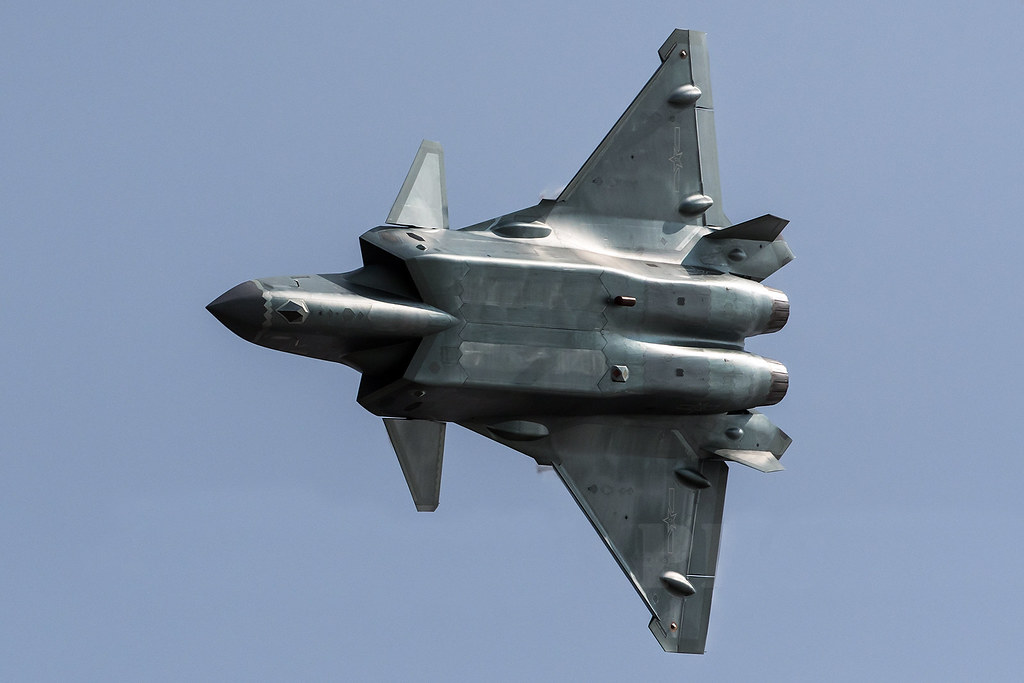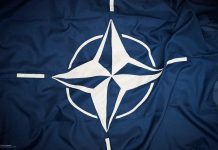
In light of the escalating prowess of China’s People’s Liberation Army Air Force, the United States (US) has strategically chosen to enhance the readiness of its F-16 Viper fighter jets through intensive training in tandem with its state-of-the-art fifth-generation F-35 Lightning II aircraft.
During the Northern Lightning exercises in Wisconsin, F-35B Joint Strike Fighters, showcasing the stealth capabilities of the Marine Corps, and F-35As, representing the combined strength of the active-duty Air Force and Air National Guard, have taken on the role of ‘playmakers’ for larger fighter jet formations. This strategic move is designed to hone their battle skills against a theoretical adversary.
In the 2023 annual exercises, an interesting pattern has surfaced where the non-stealthy but respected F-16 Viper fighters are being protected by the technologically superior F-35s. This tactical setup allows the F-16s to leverage their larger missile payload to engage simulated enemy forces, including both fighter jets and cruise missiles, more effectively.
During these exercises, Air Force T-38 jet trainers and the elusive F-117 Nighthawk stealth jets played the role of opponents. A handful of F-35s also participated, adding to the complexity of the drills.
Marines involved in the training believe that such cooperation is crucial for success in any potential high-intensity conflicts, such as a possible confrontation in the Indo-Pacific region against China. This viewpoint is particularly relevant as military analysts foresee a potential outbreak of hostilities between these two countries.
As per US Marine pilot, Capt. “Melon” Streicher, the strategic integration of fifth and fourth-generation fighter jets is being highlighted as a key component of their current training regimen.
“Indeed, the critical aspect of the integration, particularly for the F-35, lies therein,” said Streicher. “Our arsenal consists of a mere four missiles.”
This reiterated assertion highlights that despite the enhanced stealth and survivability of aircraft like the F-35s, their missile capacity remains a limiting factor when engaging with enemy aircraft.
Each model of the F-35 fighter jet is engineered to internally accommodate up to four AIM-120 Advanced Medium Range Air-to-Air Missiles [AMRAAM], or alternatively, a mix of two AIM-120s and various air-to-ground weapons. While these aircraft have a larger external load capacity, allowing for the carriage of additional air-to-air missiles and other armaments, such an action inevitably compromises their inherent stealth capabilities, a trait that primarily defines these modern combat aircraft.
On the other hand, the F-16Vs have the ability to be upgraded with the advanced AIM-9X Sidewinder air-to-air missiles, a product of the well-known Raytheon Technologies Corp. The aircraft also has the potential to be armed with a variety of missiles, namely the AGM-84 Harpoon, AGM-88 HARM, AGM-154 JSOW, and SLAM-ER. Among these, the SLAM-ER missiles stand out for their effectiveness as long-range precision strike weapons, boasting an impressive range of 170 miles.
Streicher explained that, unlike the current F-35s, “the F-16s are each equipped with six missiles. Therefore, we must ensure their successful engagement and survival in battle. If these F-16s are lost prematurely, it poses a significant problem. Hence, our role is to strategically manage the battle,” he elaborated.
Undeniably, a major advantage of the Joint Strike Fighter is its inherent ability to act as a strategic coordinator, similar to a quarterback, for both stealthy and non-stealthy aircraft in future operations. This capability extends to aircraft from various branches, as well as those belonging to international allies and partners, thereby enhancing its strategic value.
Hypothetically, if a conflict with China over Taiwan were to occur, the United States Air Force’s F-35s could potentially form a powerful alliance with Taiwanese F-16Vs to engage the People’s Liberation Army Air Force. However, this strategic scenario depends on the crucial decision of whether the United States or its regional allies equipped with F-35s – namely Japan and South Korea – choose to intervene in a war against China.
Nevertheless, if there is even a remote possibility of them deciding not to engage Beijing in direct combat, a decision that was previously observed during the Ukrainian conflict, the F-16Vs of Taiwan would be left to defend themselves against the elusive J-20s.
The inevitable clash between F-16s and J-20s
The F-35 Lightning II currently holds the title as the most sought-after stealth combat aircraft worldwide, thanks to its superior stealth features. These features, as claimed by the US, include an unparalleled combination of speed and agility, fully integrated sensor information, network-enabled operations, and advanced sustainment. These elements collectively contribute to an unmatched prowess in aerial warfare.
Typically, F-35s are deployed alongside other combat aircraft, such as the F-15 Eagles and F-16 Fighting Falcons, serving a protective role. A notable instance of this synergistic deployment occurred during a military exercise, where the stealth capabilities of the F-35 fighter jets were pitted against the heavyweight F-15 Eagles, often seen as the F-35s’ bodyguards. The result of this exercise was a remarkable kill rate of eight, with the F-35s emerging unscathed, thus highlighting their formidable capabilities.
In the intricate dynamics of warfare, the side that succeeds in detecting the enemy and launching the initial offensive often secures a commanding position. This fundamental principle elucidates the strategic deployment of the F-35s. Their function is not merely to engage in combat but to serve as the enabling force for other fighters, which carry a substantial payload of missiles yet lack stealth capabilities. The F-35s, with their advanced stealth technology, enable these fighters to release their missiles undetected, thereby enhancing the overall efficacy of the military operation.
In anticipation of potential future skirmishes with the PLA Air Force, Taiwan is aware that the F-16 Vipers, which it is currently acquiring from the United States, will likely serve as their most potent line of defense. Observers within the military sphere frequently pose the question as to whether the F-16Vs will possess the capacity to confront the J-20s, bereft of the purportedly crucial shield provided by a stealth fighter.
In an endeavor to counterbalance the formidable presence of the J-20, the third fifth-generation stealth fighter to be deployed globally, the island nation is currently undergoing an extensive transformation. It is refurbishing a fleet of 141 antiquated F-16A/B block 20s into cutting-edge US fighters. Furthermore, a procurement order for 66 state-of-the-art F-16V block 70s has been placed, signifying a robust commitment to upgrade its aerial defense capabilities.
Conceptually akin to the United States F-35, the J-20 is recognized for its advanced radar capabilities and intricate electronics, in conjunction with a seamlessly integrated weapons management system. Its well-engineered radar system boasts an impressive range, capable of identifying potential targets up to a distance of 135 kilometers. Complementing this, the aircraft’s long-range missiles possess a striking range of 300 kilometers, equivalent to approximately 186 miles, further consolidating its reputation as a formidable force in the skies.




